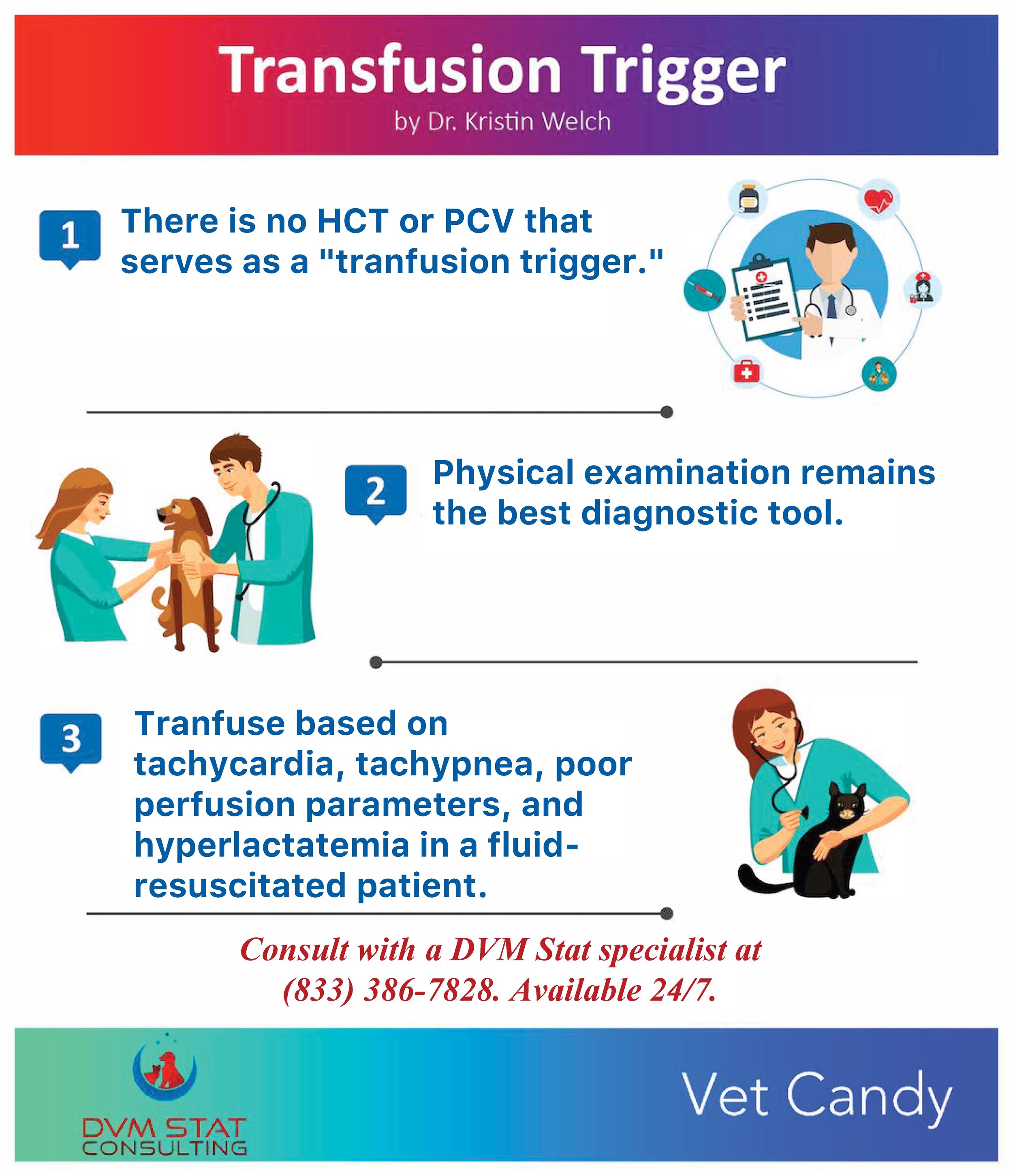Fast facts about anemia
When we see a patient with anemia, the first thought should be, is this anemia from decreased production, increased destruction or increased loss? The easiest single blood value to look at to help make this determination quickly is total solids or total protein.
Remember that with peracute blood loss, such as in trauma (ie. HBC or BDLD, for example) or acute spontaneous hemoabdomen (ie. splenic mass, rodenticide etc), the PCV initially remains NORMAL while the TS drops. Splenic contraction and peripheral vasoconstriction from compensatory shock contribute to this response.
If only a PCV/HCT is assessed, one might assume that the patient does not have large volume blood loss initially and inappropriate choices in initial fluid resuscitation may be made (ie. high volume crystalloids). Only later would one identify progressive anemia as equilibration occurs, and by then we have missed the opportunity to treat proactively.
Picture instead basing initial assessment on the TS.
If the PCV is normal but the TS is <5.5, peracute blood loss should be a differential diagnosis in patients with a compatible clinical picture. Concurrent assessment of perfusion parameters (ie. HR, pulse quality, CRT) is important to support your clinical assessment.
Not only would that prompt smaller volume crystalloid resuscitation (5-10 ml/kg boluses for dogs, 3-5 ml/kg boluses for cats) but also would prompt additional diagnostics such as FAST (Focused Abdominal Sonography for Trauma,Triage and Tracking) for confirmation. Don't forget to rule out melena in these cases too. Fresh whole blood or packed red blood cells may be even chosen as a resuscitation fluid in some cases.
Earlier diagnosis means more rapid hemodynamic stabilization and improved medical outcomes.
If you have anemia questions or want more great tips, check out DVM Stat



